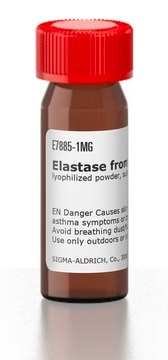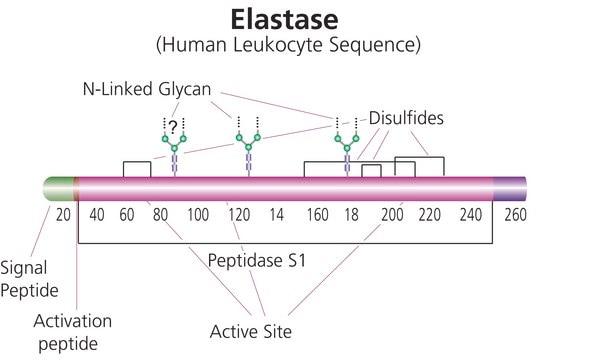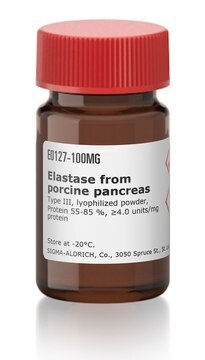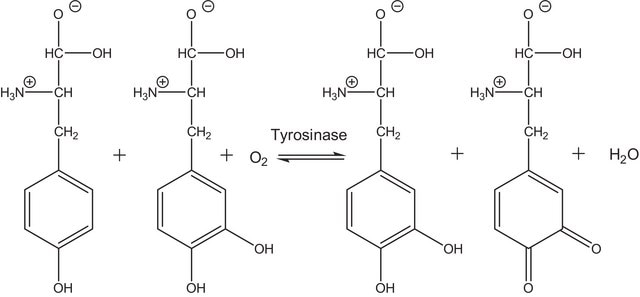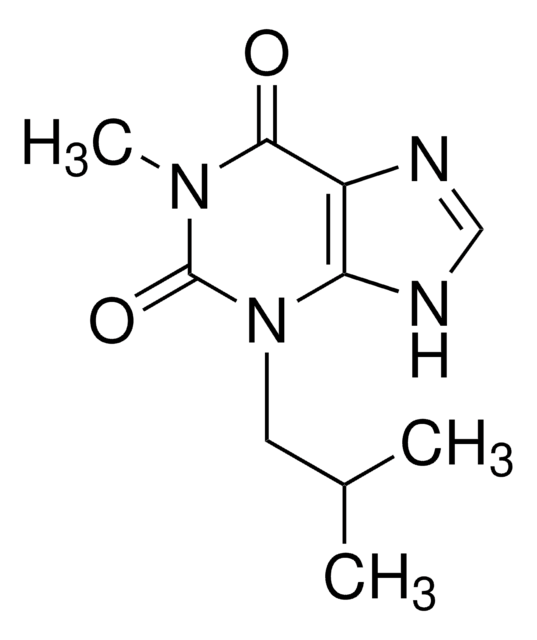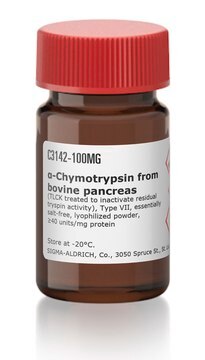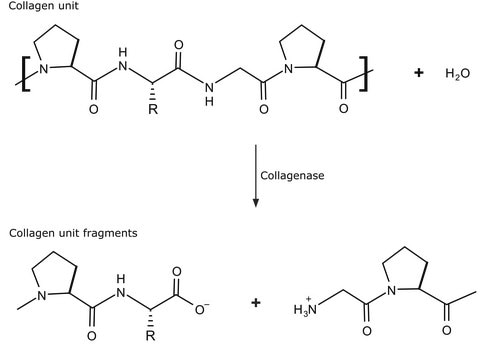E0258
Elastase from porcine pancreas
Type IV, Protein 50-90 %, lyophilized powder, ≥4.0 units/mg protein (biuret)
Synonym(s):
Elastase from hog pancreas, Pancreatopeptidase E
About This Item
Recommended Products
biological source
Porcine pancreas
Quality Level
type
Type IV
form
lyophilized powder
specific activity
≥4.0 units/mg protein (biuret)
composition
Protein, 50-90%
foreign activity
trypsin ≤50 BAEE units/mg protein
storage temp.
−20°C
Looking for similar products? Visit Product Comparison Guide
Related Categories
General description
Application
- to treat vero cells to study its effects on syncytium formation
- as a positive control in protease assays
- as a component in RPMI 1640 to isolate human aortic smooth muscle cells (HASMCs) from the aortic tissue
Biochem/physiol Actions
Packaging
Unit Definition
Physical form
Preparation Note
Application
inhibitor
signalword
Danger
Hazard Classifications
Eye Irrit. 2 - Resp. Sens. 1 - Skin Irrit. 2 - STOT SE 3
target_organs
Respiratory system
Storage Class
11 - Combustible Solids
wgk_germany
WGK 3
flash_point_f
Not applicable
flash_point_c
Not applicable
Certificates of Analysis (COA)
Search for Certificates of Analysis (COA) by entering the products Lot/Batch Number. Lot and Batch Numbers can be found on a product’s label following the words ‘Lot’ or ‘Batch’.
Already Own This Product?
Find documentation for the products that you have recently purchased in the Document Library.
Customers Also Viewed
Chromatograms
application for HPLCOur team of scientists has experience in all areas of research including Life Science, Material Science, Chemical Synthesis, Chromatography, Analytical and many others.
Contact Technical Service
